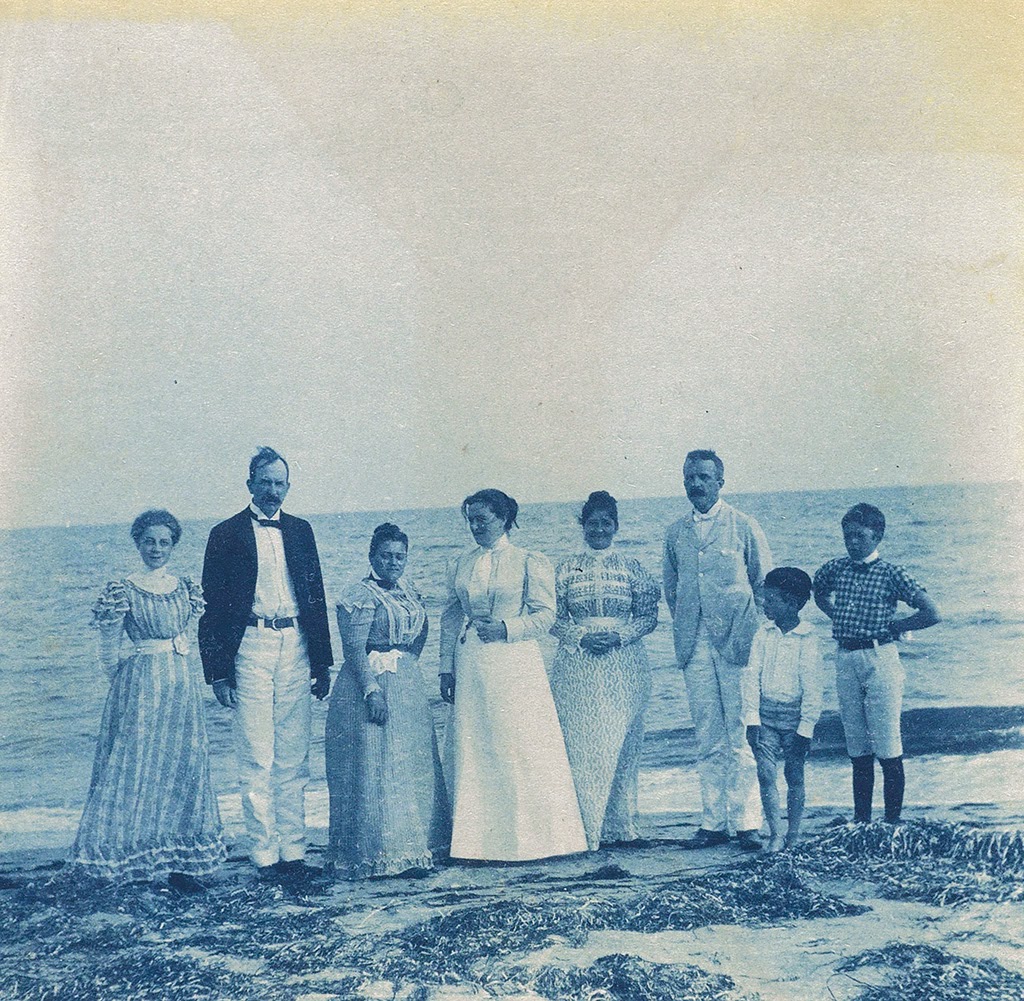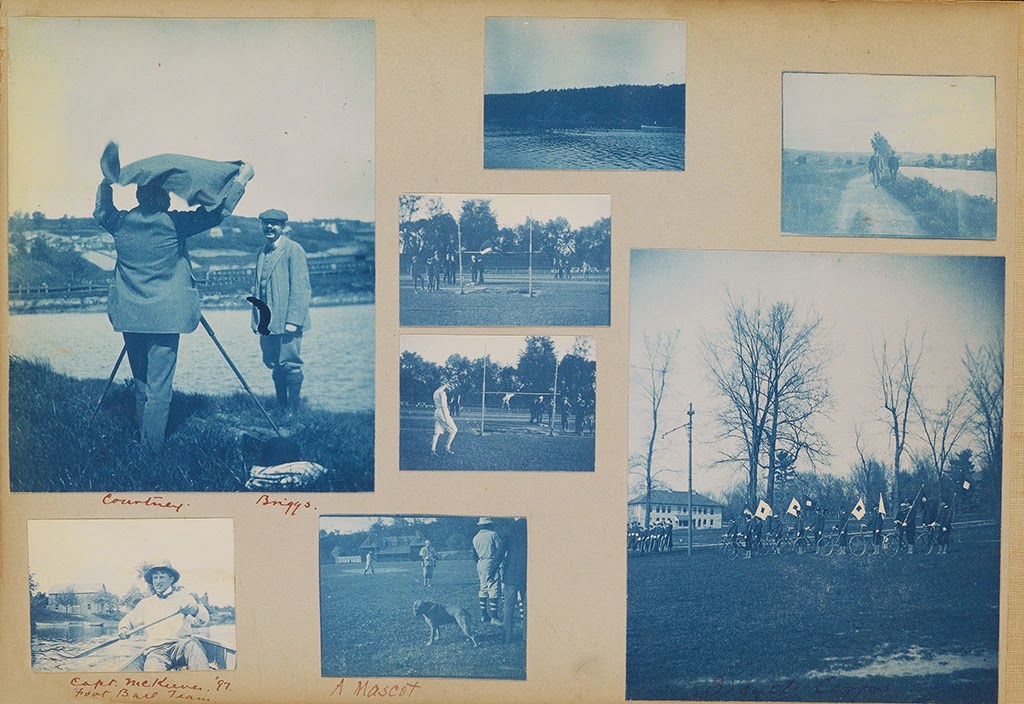![]() |
| Lot 44: an album of 200 cyanotype snapshots mostly from Eastern Massachusetts, 1899 |
The cyanotype or blueprint process has a poetic quality that embodies a painterly aesthetic and is defined by particular visual characteristics, in this case, a distinctive and rich "prussian blue" monochromatic palette.
Although the technique was invented at the outset of photography, in 1842, by the renowned British astronomer Sir John Herschel (a friend of Julia Margaret Cameron), its heyday was from the 1890s through the 1910s. Cyanotypes were employed by artists, scientists, commercial photographers and hobbyists alike. Today, the technique is experiencing something of a Renaissance and is embraced by new generations of artists and photographers.
The simplicity of creating cyanotypes made this an ideal photographic process for the amateur intent on chronicling everyday life. A printing-out process, sheets of photo-sensitive paper were exposed to natural light (instead of pesky enlargers and darkroom chemicals) to create a photographic print. Cyanotype images were made by industrial photographers who recognized their strong visual appeal; college students intent on exploring photography as a mode of creative expression; and photographers who enjoyed the (fairly) immediate gratification of watching images manifest in daylight.
Our upcoming Vernacular photography auction offers many wonderful examples, including:
![]() |
| Lot 23: A typological collage of 9 identical close-ups of an unidentified machine, 1890s. |
![]() |
| Lot 27: 63 cyanotypes documenting construction of a bridge in the French countryside, 1899-1902 |
![]() |
| Lot 48: Snapshot album with 500 cyanotypes of Cornell University and Ithaca, NY, 1898-1905 |
![]() |
| Lot 104 is a pop photographica item: a cotton pillowcase with 12 cyanotype views of a small town, circa 1900. |




